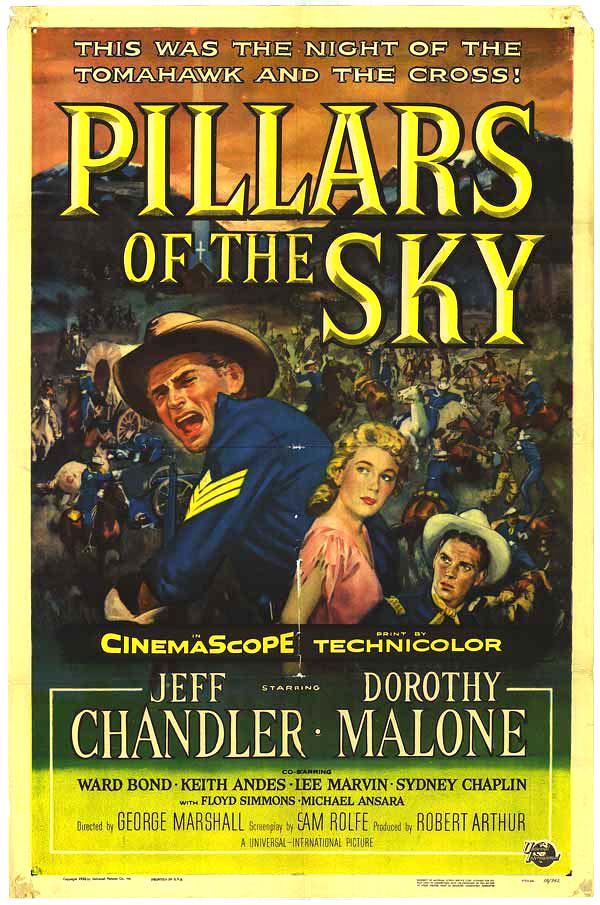Pillars of the Sky

In Oregon Country, 1868, several tribes of Native Americans have been placed on a reservation north of the Snake River. Sgt. Emmett Bell (Jeff Chandler) tries to keep the peace when U.S. Cavalry soldiers threaten to build a road through government designated Indian land. Boasting a fine supporting cast including Lee Marvin, Ward Bond and Dorothy Malone, Pillars of the Sky is an intriguing western, unique in its sympathetic depiction of Native Americans, who were often vilified onscreen. During the summer of 1954, producer Robert Arthur was in talks with John Ford to direct Pillars of the Sky for Universal with John Wayne as the star. Ford and Wayne were unable to commit to the project, however, but went on instead to make the classic The Searchers (1956) together. Universal then went to George Marshall to helm the film with Jeff Chandler as the lead; Marshall had been directing westerns for the studio since 1916 and was an ideal choice. The cast and crew of roughly 150 went on location to the rugged landscape of eastern Oregon for nearly six weeks to shoot Pillars during the summer of 1955. It was a majestic landscape, according to Jeff Chandler biographer Jeff Wells, "of towering evergreens and snowcapped peaks" whose breathtaking beauty had once enticed the original pioneers to settle during the 1880s. The lushness of the location scenery is vividly captured by cinematographer Harold Lipstein in glorious Technicolor CinemaScope. Jeff Chandler, who in addition to movie stardom had enjoyed some success as a singer and composer, passed the time on location by working on a title song for Pillars of the Sky. He had previously penned the lyrics to and recorded the theme song for his 1955 film Foxfire and also provided lyrics to the theme song for Six Bridges to Cross (1955) recorded by Sammy Davis, Jr. However, citing "circumstances beyond his control", Chandler never did complete work on his song for Pillars. The onscreen writing credits of Pillars officially lists its source material as Will Henry's 1952 novel Frontier Fury, published originally as part of Zane Grey's Western pulp magazine series. However, it was another Will Henry novel, To Follow a Flag that served as the film's true source. To Follow a Flag was loosely based on an actual confrontation that occurred near the border of Idaho and Washington state in 1858. This book was re-released some years later with its title changed to Pillars of the Sky. Lee Marvin fans will enjoy watching the veteran actor play an Irishman with a thick brogue in Pillars of the Sky. His role as Sgt. Carracart was relatively early in his career, and doing accents was a rarity for him. His part here is small, but Marvin, as always, makes a memorable impression. Pillars of the Sky's earnest attempt to paint a balanced portrait of race relations within the western made it stand out from the herd. In its review at the time, the New York Times said, "It's a pleasure to watch a modest, soldier vs. Indian picture shape into something respectable...Pillars of the Sky, with a nice, surprising mixture of compassion and cynicism, keeps insisting that (the characters) all matter, red and white."